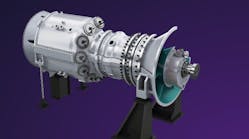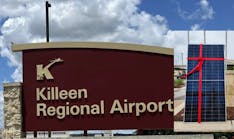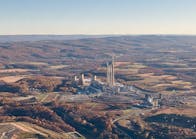Sempra Infrastructure to supply LNG from future Gulf Coast Terminal to Germany’s RWE
Energy supplier Sempra Infrastructure has signed a deal to sell liquefied natural gas (LNG) from its proposed Port Arthur LNG Phase 1 project in Texas to energy-trading company RWE Supply & Trading.
The agreement will see Sempra supply around 2.25 million tons per annum (Mtpa) of LNG to RWE Supply & Trading, a unit of German energy firm RWE, on a free-on-board basis for 15 years.
The deal also includes provisions for exploring ways to lower the carbon intensity of the LNG produced from the Port Arthur LNG Phase 1 project currently under development in Jefferson County, Texas. This may involve implementing greenhouse gas emission reduction strategies and a continuous improvement approach.
“Our partnership with Sempra Infrastructure, one of the leading companies for LNG infrastructure in the U.S., is another important step to diversify Germany's gas supply and thus contributes to enhancing security of supply in Europe on a long-term basis,” said Andree Stracke, CEO of RWE Supply & Trading. “Thanks to the LNG supply contract with Sempra Infrastructure, we can also enlarge our international LNG portfolio.”
Sempra recently signed long-term agreements with ENGIE, INEOS and ConocoPhillips for the sale and purchase of approximately 7.3 Mtpa of LNG from the proposed Phase 1 project. (story continues after related links).
Related LNG stories at EnergyTech.com
New LNG projects strengthen U.S. position as world's largest exporter
Bechtel building LNG tanks in Taiwan
Four LNG-fueled Cogeneration units will provide Heat and Power for Cannabis cultivation site
“Because of its scale, location and permitting status, Port Arthur LNG is benefitting from a lot of commercial momentum with nearly all the projected off-take capacity for Phase 1 now under long-term agreements with some of the leading global energy companies," Justin Bird, CEO of Sempra Infrastructure, said. "Today's announcement moves us one step further along in the process of making Port Arthur LNG a reality."
The company is working towards making a final investment decision for Phase 1 of the liquefaction project in the first quarter of 2023, with first cargo deliveries expected in 2027. Once approved, Bechtel will handle engineering, procurement and construction duties for the project.
The Port Arthur LNG Phase 1 project is expected to include two natural gas liquefaction trains and LNG storage tanks with a capacity of approximately 13.5 Mtpa of LNG. A similarly sized Port Arthur LNG Phase 2 project is also under active marketing and development.
U.S. LNG is becoming the nation's top energy export due to a variety of factors, including lower prices, increased production and Russia's invasion of Ukraine earlier this year. Russia has been a longtime exporter of its own natural gas to Europe, but the relationship has soured in the wake of the war.
Sempra Infrastructure is owned by San Diego-based utility holding company Sempra Energy. RWE is a German energy company that generates and trades electricity in Asia-Pacific, Europe and the U.S.





